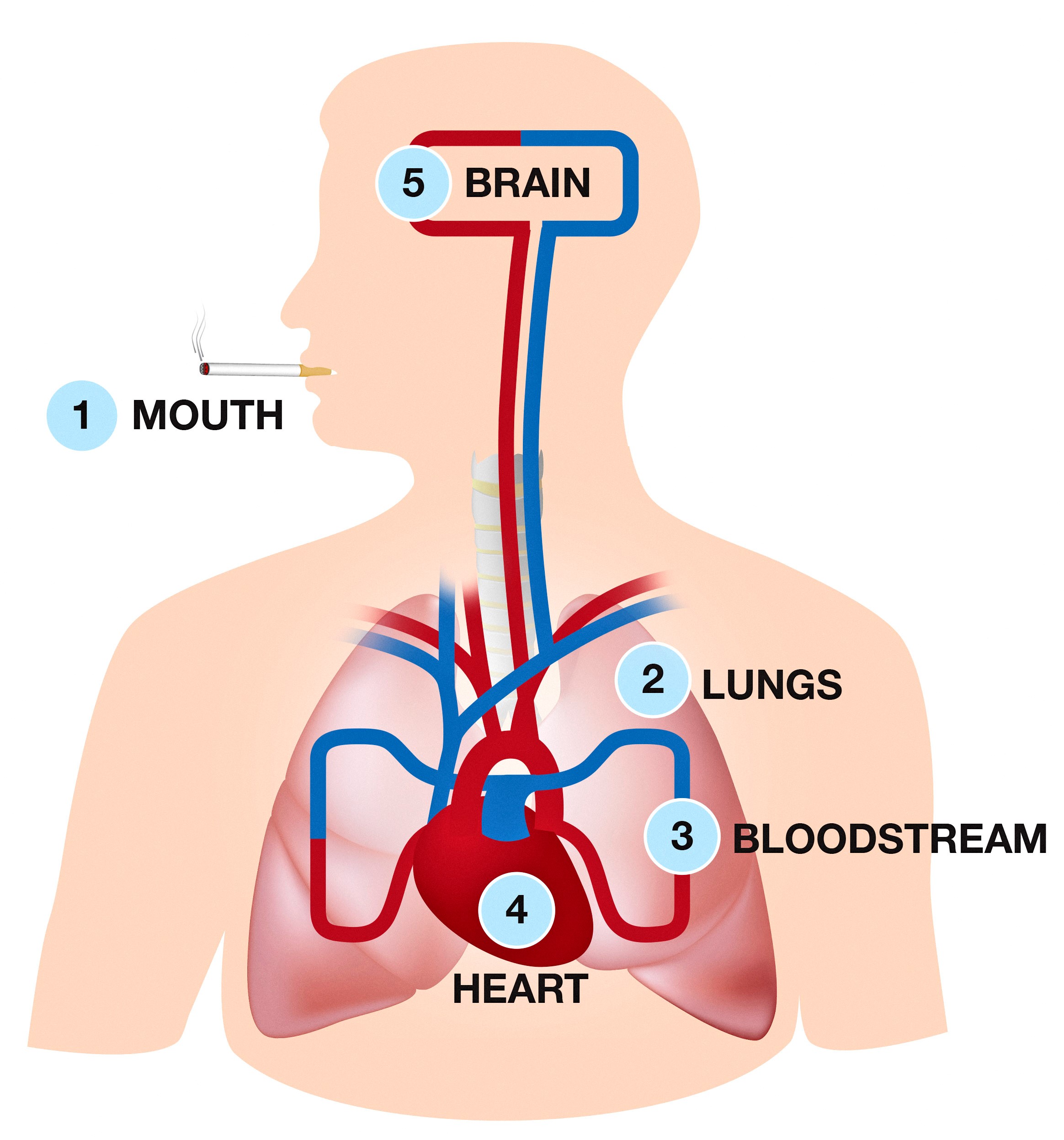Within 20 minutes of smoking your last cigarette, your body begins a series of changes that continue for years.
- 20 minutes after quitting, your heart rate drops
- 12 hours after quitting, the carbon monoxide level in your blood drops to near normal
- 2 weeks to 3 months after quitting, your heart attack risk begins to drop; your lung function begins to improve
- 1 to 9 months after quitting, your coughing and shortness of breath decrease
- 1 year after quitting, your added risk of coronary heart disease is half that of a smoker
- 5 to 15 years after quitting, your stroke risk is reduced to that of a nonsmoker
- 10 years after quitting, your lung cancer death risk is about half that of a smoker; your risk of cancers of the mouth, throat, esophagus, bladder, kidney and pancreas decreases
Tobacco is harmful
When tobacco is burned, over 7,000 chemicals are released in the cigarette smoke that goes into your body and the air around you. Many of these chemicals are poisons.
Carbon monoxide, found in automobile exhaust, is one of the chemicals found in large quantities in cigarette smoke. When you smoke, carbon monoxide takes the place of some of the oxygen in your blood, preventing your heart, brain and other organs from getting the oxygen they need.
There are over 60 known carcinogens (cancer-causing chemicals) in tobacco smoke. You might be surprised to know some of the chemicals in tobacco smoke include:
- Arsenic – used in pesticides
- Benzene – important component in gasoline
- Formaldehyde – used for embalming human remains and in nail polishes/hardeners
- Methanol – a simple alcohol used in antifreeze, solvents and fuels
- Ammonia – used in many commercial cleaning products
How nicotine affects your brain
The physical challenge of smoking is difficult because tobacco contains an addicting drug called nicotine. Your body depends on the nicotine and this is what makes it so difficult to stop smoking, even though you want to.
When tobacco is smoked, high levels of nicotine enter your lungs and are quickly absorbed into your bloodstream. In fact, inhalation is the quickest way for a drug to reach the brain. Nicotine from a smoked cigarette will reach the brain in as little as 7 seconds after inhalation.
As nicotine increases in the body the number of nicotine receptors increase in the brain.
Smokers have many more nicotinic receptors than nonsmokers do. When filled with nicotine, these receptors will “fire,” causing the feelings you have when you smoke. When empty, the receptors make you feel uncomfortable and increase your urge to smoke. When you stop smoking, many nicotinic receptors will disappear, but those that remain have “memory” and can be triggered by cues.
